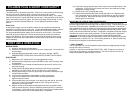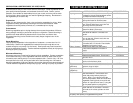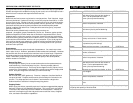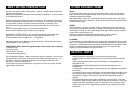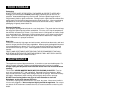
MEAT DRYING PREPERATION..
Normally raw meat is used for making jerky. However, cooked meat as well as raw
meat can be dehydrated.
Make sure to always cut meat down to bite size before dehydration. It is much easier
to work with beforehand.
Be extra careful when making jerky from raw chicken or turkey because salmonella
bacteria may be present in poultry when it is purchased. It is extremely important to
cut raw chicken or turkey into portions that do not exceed 1/4" thickness. Any
marinade must thoroughly penetrate and soak into the meat, up to 10 minutes or
more.
It is not recommended to remove any excess marinade sauce.
Never consume food that tastes, smells or looks improper.
RAW MEAT FOR BEEF JERKY: Any kind of beef is good for making beef jerky.
Make sure to trim off all the fat before slicing into bite-size portions. It is
recommended to slice meat about 1/8" - 1/4" thickness.
Marinating beef has many different combination recipes. Please see some recipe
samples below for your preference:
TRADITIONAL JERKY: (Good for approximately 3-5 lbs of beef, fish, or poultry)
½ lb brown sugar
3 cups soy sauce
*Spices of your choosing
½ cup liquid smoke (optional)
Mix all ingredients together. Make sure the brown sugar is dissolved. Let mixture sit
for approximately 15 minutes. Place cut up meat into the marinade and cover. Let
stand for 10 minutes refrigerated. Make sure to turn meats periodically to coat
thoroughly. Drain any excess liquid.
Place meats onto trays and dehydrate. Drying time for a full 5-tray set up will take
approximately 24-36 hours.
OTHER DRYABLE ITEMS..
NUTS:
Remove shells to the nuts and rinse nuts with warm water. Pat dry and spread on
trays. Most nuts will take approximately 20-30 hours to dehydrate; they should be
allowed to dehydrate until brittle.
After dehydrating, allow to cool. Nuts that will not be consumed within a day or two
should be frozen to ensure freshness. Remove nuts from the freezer and allow them
to defrost before using.
HERBS:
Rinse and pat dry. Remove any dead, mushy or discolored portions, but leave the
stem and do not break apart until drying. Spread herbs or flowers on tray and allow
to dehydrate for about 2-7 hours, depending on their type. When drying is complete,
remove from tray and allow to cool.
Remove from stem and break leaves or buds apart, or crush if desired.
If dehydrating seeds, choose when pods have changed in color.
FLOWERS:
For best results, pick flowers after the morning dew rises and before the evening mist
sets in. Do not use flowers that have been sprayed with insecticides or other harmful
chemicals. If dehydrating at the same time as herbs intended for consumption, place
flowers on the bottom trays and herbs on the top trays; this is to prevent any
“drippings” from the flowers to fall onto the herbs.
HELPFUL HINTS..
- Always preheat the dehydrator for at least 5 minutes before using.
- If the dehydrator has been stored away for some time, wash and clean before
using.
- Fresh vegetables and fruits are best for dehydrating. Canned goods to not
dehydrate as well.
- Vegetables and fruits should always be cleaned before preparation and
pretreatment.
- For best results, always prepare and pre-treat fruits and vegetables as outlined in
this manual.
- It is relatively safe to leave the dehydrator on when dehydrating foods take a long
time, but make sure to set the dehydrator in a safe place. Read the “Important
Safeguards” on page 1 of this manual, and exercise safety when using this
product.
- Exact dehydrating time varies greatly depending on several factors: Type, size
and quality of food, quantity placed on trays and personal preference. It will help
to keep a personal notepad where you can write down your own notes. Keep
notes on the type of food, weight before and after drying, total drying time and
final results





